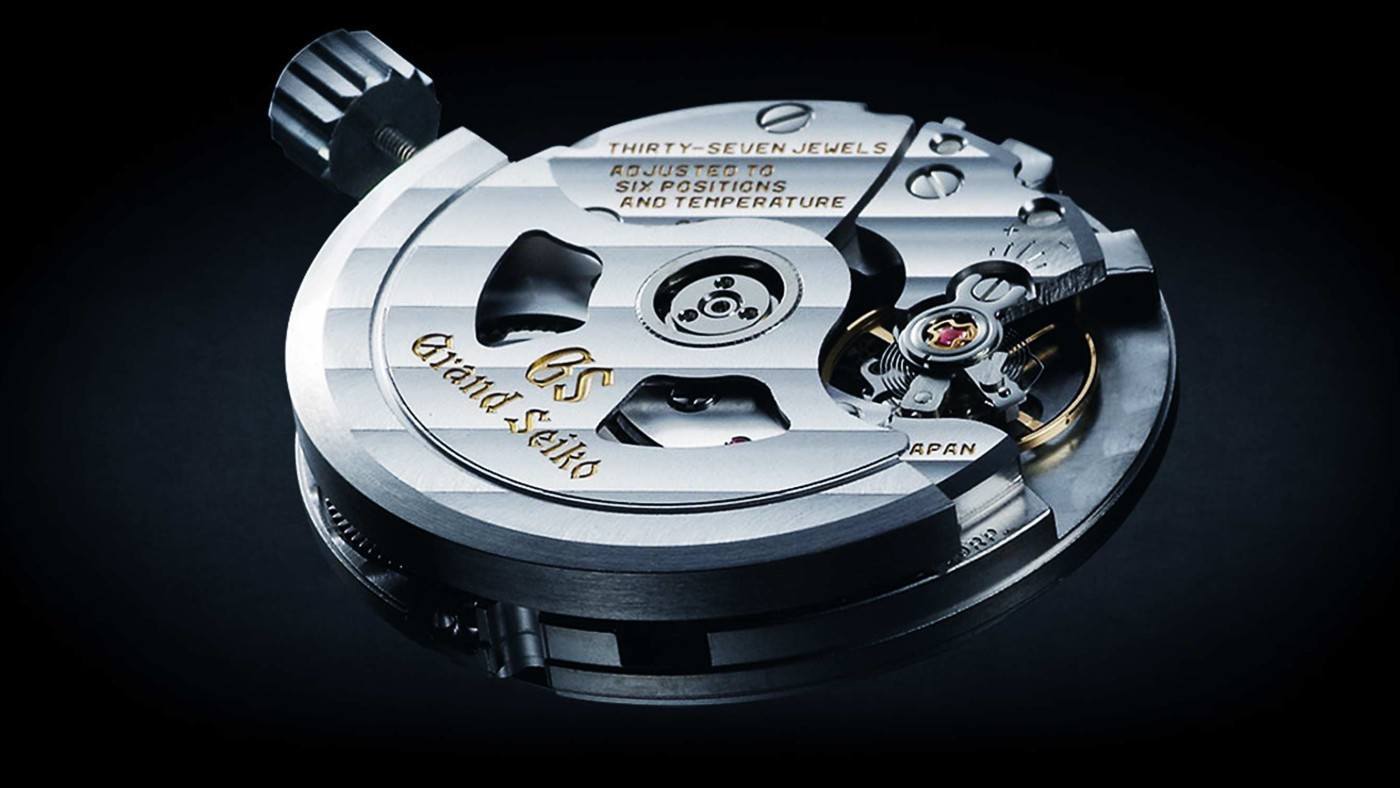Today we’re going to talk about just one watch brand. It’s one of the greatest of them all.
Since it was founded it has had a forensic, almost fanatical focus on quality. Unlike 99% of watch-makers it makes every last piece of its watches itself, right down to the lubricating oil inside them. The watches it makes are hugely collectable, deeply loved by watchies and in many cases famous. It has been one of the great innovators, with its own dedicated watch-makers, trained from young boys to become master craftsmen, producing world firsts regularly. And its greatest creations are hand-made, painstakingly, part by tiny part, in a small facility high, high in the mountains, amid the sweet smell of the pine trees and the echoless, sound-deadening world of thick snow.
So which great Swiss house are we going to look at?
None of them. In fact we’re not going near Switzerland, or even Europe.
Seiko. A Japanese watch brand which means different things to different people.
Cog for cog I believe it makes the best watches in the world; not because they’re affordable, but because you get more quality for every pound you spend on a Seiko than just about anything else. And Seiko also hides one of the watch world’s best kept secrets: high up in the mountains outside Morioka is something very, very special indeed. But patience, it’s a long climb up there and we must start much closer to the ground.
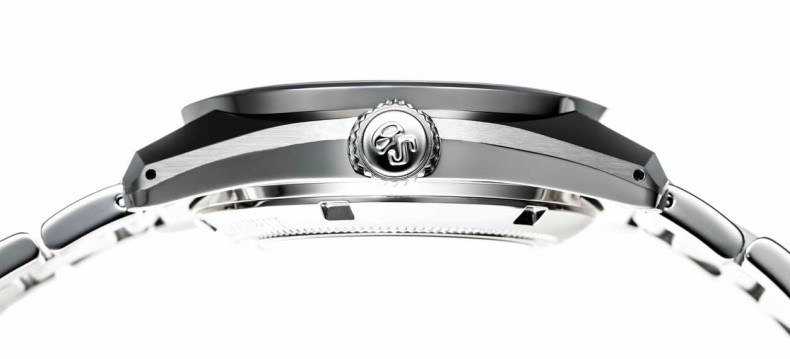
To understand why Seiko has such a special place in the hearts of watch fans it’s important to understand just a tiny part of its history.
In 1877, the tenth year of the Meiji Era, a young man named Kintaro Hattori started a clock repair service based in his house in Ginza. He soon began selling second hand clocks too and, aged just 22, he founded “K Hattori”. Fifteen years later Hattori San was the head of a significant clock wholesale business and decided it was time to produce his own clocks as well as selling other peoples’. So in 1892 he bought a disused factory in Tokyo and formed “Seikosha” (“Seiko” in Japanese can mean “exquisite” or “minute” or “success”, whilst “sha” means “house”). The successful house of the exquisite minute, if you’re prepared to ignore the linguistic rules of Japanese for a moment. Given that little more than a century later Hattori’s descendants, who still run the giant Seiko Corporation, would have turned his company in to the world’s largest watch producer, it was well named.
By the time of Hattori’s death in 1934 his Showa factory was already well known for its pocket watches (Seikosha) and increasingly for its wristwatches (Seiko). It’s still there, now one of many of course, and not only in Japan, but watches which are still made there bear a small lightning bolt style “S” for “Showa” on the dial, just to make the point.
It was the 1960s and 70s though which really saw Seiko make the leaps in quality, innovation and structure which were to determine its future. Throughout the 1960s Japanese and Swiss technicians were locked in a dramatic and secret race to produce the first commercial quartz watches. CEH, the massed might of the great Swiss makers, versus Seiko’s research and development department. Seiko technicians were struggling when Chairman Shoji Hattori ran out of patience and gave the order: it will be ready within one year!
Thus Seiko poured everything it had in to the project, and it won. On Christmas Day 1969, Seiko launched the world’s first commercially available quartz watch. It cost the same as a new Toyota, but it wasn’t long before the watches became more and more affordable and eventually they would decimate the Swiss mechanical watch industry.
As the Swiss suffered they had no money for R&D, whereas Seiko did. The Japanese company made the decision to make huge funds available to keep innovating, and that worked too.
Quartz movements represented a revolution in accuracy; digital quartz watches changed the way watches looked and the “automatic generating system”, which Seiko eventually named Kinetic – i.e. the first quartz watch which required no battery – took quartz watches to a new level.
All this was allied to a decision to build facilities and factories to make every part of a Seiko watch in-house. Cases, quartz crystals, face glass, and every part of the movement and the liquids which lubricate it. Yet again this proved the right choice as Seiko’s parts supply line was, well, Seiko. No problems there, unlike the poor old Swiss.
To understand the scale of this success one need only look at the numbers.
Seiko’s watch exports in 1965 were a relatively humble 1.6 million pieces. This reached 4.9 million in 1969 and by 1977 had climbed to 11.8 million. By 2001, Seiko produced around 21 million watches. Today it dwarfs that figure.
If this was a boxing match the ref would have stopped it long ago, to borrow a cliche from football.
What saved the Swiss was a new market for the mechanical watch which began in the 1980s and has flourished ever since, growing exponentially in the last five years. Mechanical watches became, effectively, luxury goods rather than wholly practical tools. New generations fell in love with the idea of these tiny analogue machines not as perfect timekeepers but as wonderful things in their own right and fabulous pieces of design. After lots of take-overs, amalgamations and mergers, the Swiss came back.
But in this area, and this is where the love for Seiko comes from amongst today’s collectors, Seiko had never gone away.
With an enriched and healthy company below them, each new generation of the Hattori family insisted that Seiko made better and better mechanical watches too. Their divers, from the humble 6309 up to the anything but humble 1000ft capable Mastermaster Professional, continually came up trumps. They regularly out-performed the opposition whilst remaining affordable. Moreover, given they were selling tens of millions of watches anyway, they could muck about. Seiko was responsible for numerous left-field designs which were moderately popular when they emerged, but are staggering collectable now.
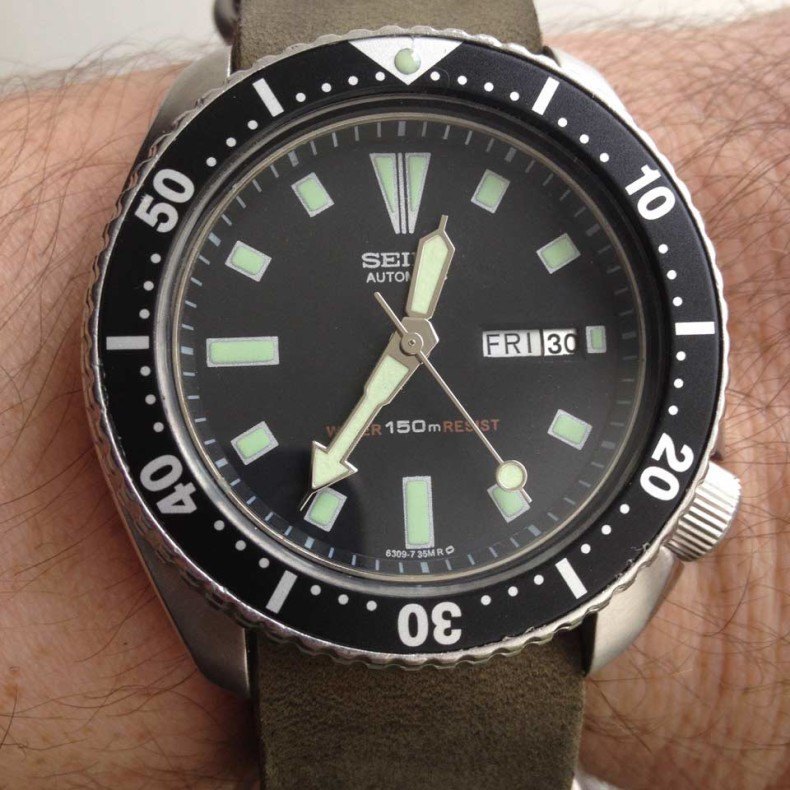
A 1980s Seiko 6309-729a diver
And gradually Seiko’s mechanical watches developed a brand identity of their own, and it was this: watches worn by people who appreciate quality but have no desire to show off. In itself fabulously Japanese.
The dash through Seiko’s history we’ve taken should be enough to do away with the lazy stereotype that the Japanese only copy, rather than create, but Seiko was happy to do both. It made what amounted to its own versions of Rolex’s iconic Submariner, and even Heuer’s legendary Monaco (there are two of those on eBay as I type by the way, don’t say I never do anything for you).
Today all these beautifully designed and capable timepieces are rising in value by the day, and many are so cherished by collectors they have been given nicknames where Seiko only provided numbers by way of christening them: “Bullhead”, “Pepsi”, “Darth Vadar”, amongst many others.
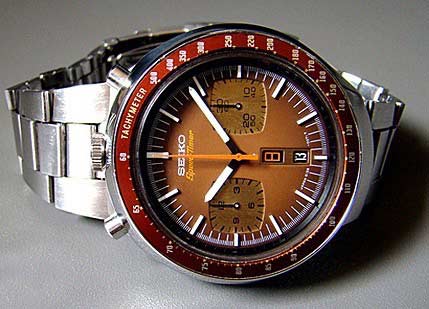
The much sought-after Seiko “Bullhead”
So we’ve explored why Seiko is not what most people think it is, and why it’s a watchies’ favourite. But we have one more place to go.
I promised you a trip up the mountain, and I always keep my promises. When we get there, past the very deferential but politely firm security guards who will take your camera phone away, past the cameras which turn and peer through the falling snow at us as we approach, we find the Shizuku-Ishi Watch Studio. And on its top floor, a few rows of individual work-desks set behind triple-glazed glass walls against which the wind blows silently across the Alpine landscape beyond.
Grand Seiko. GS. The mother lode.
Until very recently Seiko didn’t even sell its GS watches outside Japan. They do now, and before long they may even – shock of shocks – market them too. But they’ll do so very carefully, because there is no greater example of understatement and quiet self-confidence then wearing a Grand Seiko, and really hasn’t been since the first of them arrived in 1960.
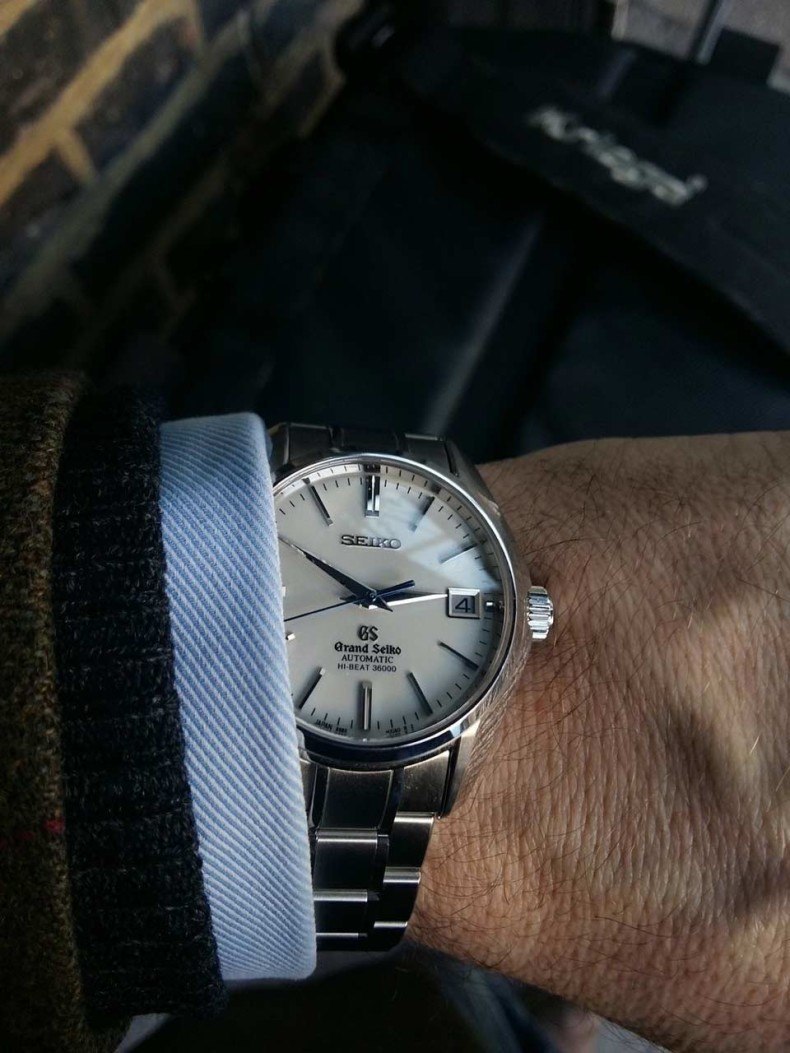
This Hi-Beat Automatic in steel will cost you £5,000 in the UK. The quality is obvious from without. Wherever you look the detailing is wonderful. There is a man up that mountain you know whose only job is to polish the hands of these watches.
And within, it’s even better.
Pull a balance spring from most top-end watches straight and it’ll stretch, returning to shape but not size. Do that to the one in your Grand Seiko and it’ll snap straight back to original. Why? Because they spent six years developing the alloy it’s made from so it would perform like that. Six years.
Seiko has gradually increased production of GS watches in recent years (by training more watchmakers, of course, given they’re all hand-made). Sales have shown double digit growth year-on-year since 2010, when they were first available outside Japan, and the company has aspirations to see the sub-brand compete in sales terms with luxury watches from European manufacturers.
The line, which includes automatic, Spring Drive and high-accuracy quartz movements, may well also see new models with added complications – “We do not deny the possibility” I was told, in a very Japanese way.
Pleasingly though, you won’t be seeing a GS Tourbillon or similar any time soon. Seiko regards such complications as “artworks rather than practical watches” and, true to its heritage, Grand Seiko is about quality and performance, not showing off.
For me that’s the chief joy of this lesser known arm of the world’s biggest watchmaker – it’s not the quality, the special way they wear or even the technical brilliance. It’s that those who wear a GS know what it is, and that’s all that matters to them.

